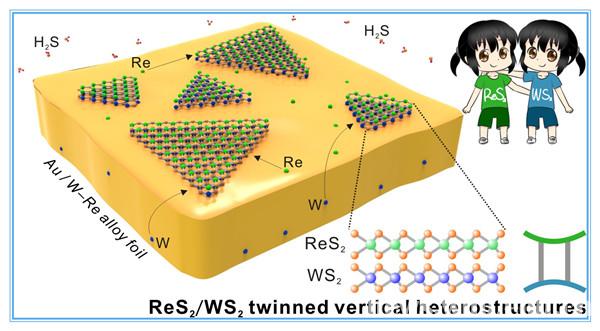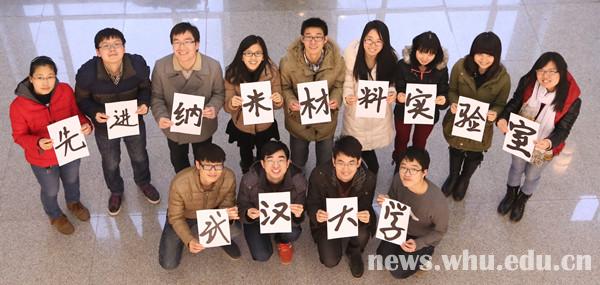Nature Communications published the research outcome of Prof. Fu Lei’s team from College of Chemistry and Molecular Sciences online, which concern twinned growth behavior of two-dimensional materials. This research result is expected to become a new core technology on fabricating heterostructure and superlattice materials.
The paper is entitled Twinned Growth Behavior of Two-Dimensional Materials. The first institute is Wuhan University. The first author is doctoral student Zhang Tao of grade 2016 and Jiang Bei, master student of year 2015 is the first co-author. Fu Lei is the only corresponding author. The research is supported by the Natural Science Foundation of China and the Sino-German Center for Research Promotion.
Two-dimensional heterostructure construction has been a promising research field in recent years. This research makes it possible to produce new materials with new properties through the overlapping of different two-dimensional materials. Electronic devices made of these new materials tend to have better performance. Now the pivot and main difficulty of research in this field lies in the efficient obtainment of two-dimensional heterostructure. The surface cleanliness and stacking proportion are the two crucial testing indicators.
Fu Lei’s team witnesses the first discovery of twinned behavior of two-dimensional materials and obtains a vertical heterostructure with 100% stacking rate. They propose an innovative strategy of liquid mental instead of the previous technique that takes oxide powders as the precursor. This directly applies the transition metal dichalcogenide into the liquid mental and achieves the twinned behavior between ReS2 and WS2 through the former’s dependence on the latter. This special twinned behavior is expected to be applied in an expanding field of heterostructure construction of other two-dimensional materials with its clean interface and high stacking rate. This finding can be a promoter to the fundamental research and practice on superlattice of different two-dimensional materials.
Fu Lei is supported by National Natural Science Foundation--Outstanding Youth Foundation. He has been engaged in the research on low dimensional nanomaterials’ controllable growth and nanodevices. Recently he has focused on developing liquid metal chemical vapor deposition. He joined in Wuhan University in 2012 and build the Laboratory of Advanced Nanomaterials (LAN for short), constructing a young and energetic team. The “LAN for dream” team won the first prize in the fourteenth “Challenge Cup” National Undergraduate academic science and technology works competition. In 2016, Fu’s team has published six SCI papers with Wuhan University as the first unit on international authoritative journals with IF larger than 10, including one Nat. Commun.,two J. Am. Chem. Soc., one Adv. Mater., two onACS Nano.


(Rewritten by Jin Yiwen)
(Edited by Shen Yuxi, Hu Sijia)


